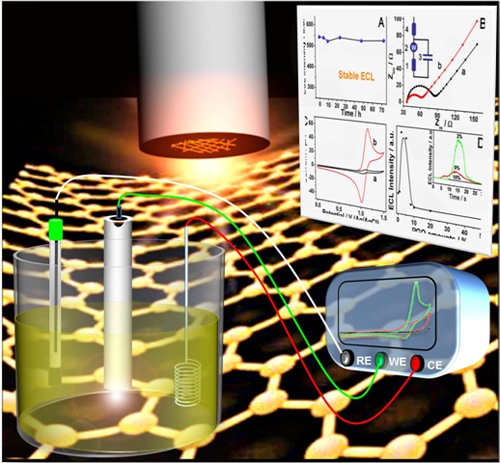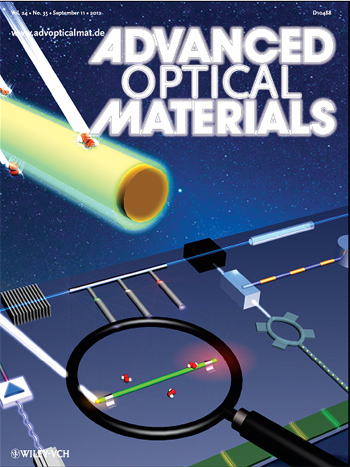ICCAS develop optical waveguide sensors based on organic nanomaterials
The waveguiding single-nanowire has been demonstrated for bio-/gas sensing with fast response and high sensitivity with the evanescent coupling method.
In recent years, Prof. Yao Jiannian and Zhao Yong Sheng’s groups in the Key Laboratory of Photochemistry in the Institute of Chemistry, the Chinese Academy of Sciences(ICCAS) have studied on the fabrication of photonic devices based on the low-dimensional organic nanomaterials (Acc. Chem. Res., 2010, 43, 409-418). They have developed various nanophotonic devices such as sub-wavelength optical waveguide (Adv. Mater. 2011, 23, 1380-1384), nanolasers (J. Am. Chem. Soc., 2011, 133, 7276–7279), and photonic routers (J. Am. Chem. Soc.,2012, 134, 2880-2883).
In their recent work, the electrogenerated upconversion was achieved in the uniformly doped organic nanowires based on triplet energy transfer from tris(2,2'-bipyridyl)ruthenium(II) to 9,10-diphylanthracene (Chem. Commun., 2012, 48, 85-87). These works paved the way for the fabrication of sensor device from organic nanomaterials.
Recently, under the supports of the National Nature Science Foundation of China , the Chinese Ministry of Science and Technology, the Chinese Academy of Sciences, and Institute of Chemistry, they prepared binary organic nanobelts, which can be applied for the sensitive detection of acid and basic chemical vapors. They also fabricated a novel ECL biosensor withsingle crystal organometalic nanowires. The sensor exhibited high sensitivity and long-term stability, and showed a wide linear response range and low detection limit for biomolecular analytes (Adv. Mater.,2012,24, 4745-4749,http://onlinelibrary.wiley.com/doi/10.1002/adma.201201931/abstract).
On this basis, they prepared core/sheath structure by decorating single-crystal organic nanowires with H2O2-reactive peroxalate ester. The cable-like optical waveguide sensing platform could rapidly and selectively monitor the H2O2 vapors through the amplified optical variation across the wire waveguiding, showing that a single nanocable is very promising for developing optical probes to detect individual responses on chip.
The results have been published in Adv. Mater.,2012, 24, OP194-OP199(http://onlinelibrary.wiley.com/doi/10.1002/adma.201200867/abstract), and selected as the inside cover of Adv. Opt. Mater..

Figure 1. Electrogenerated chemiluminescent sensors based on low-dimensional organic nanomaterials for the effective and sensitive detection of dopamine. (Image by LI Qing )

Figure 2. Cover story: Organic core/sheath nanowires as the optical waveguide sensors for the fast, sensitive and selective detection of H2O2 vapors. (Image by ZHENG Jianyao)





